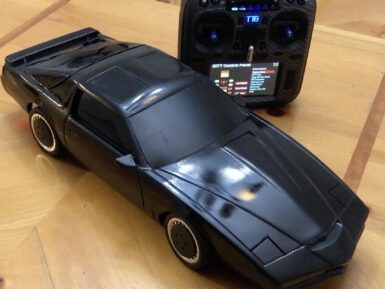
Grove - I2C Hub (6 Port)
Grove - I2C Hub (6 Port) is an I2C expansion interface board, compared with the old Grove - I2C Hub, the same size, two more connectors, almost half the price!
Overview
We've already released the Grove - I2C Hub (4 Port), now comes the 6 port version, the same size, two more connectors, almost half the price!
As you may know, the 7 address length I2C bus allows up to 128 I2C devices to access.
At present, there are over 80 Grove I2C modules in Seeed, however, normally only 1 or 2 Grove I2C connectors are available on the Seeeduino Board or the Grove Base Shield. What if we need to use multi Grove I2C modules in the system? The answer is Grove - I2C Hub (6 Port).
There are 6 Grove connectors in this hub, one input, five output, or you can even connect one hub with another, so that more devices can be plugged in.
Not only I2C but also can be used to control several synchronous change devices (like LEDs).
We did a survey and gathered some feedback about the old Grove I2C Hub (4 Port), many users mentioned that the 4 slots are not sufficient, so we add two more and keep the same 20*40mm size.
SeeedStudio always values the voice of our customers, and we appreciate our customers helping us grow and make us better.
Get Inspired
A Big Ben chiming clock using an Arduino Nano, a DS1302 RTC, a DFplayer Mini showing the time on a Nokia 5110 lcd with nightly cuckoo sounds

KITT (Knight Industries Two Thousand) was a fictional car based on a 1982 Pontiac Trans Am in the Knight Rider television series. KITT featured an artificial intelligence, voiced by the legendary William Daniels, and some iconic styling. Savall21 built a replica RC KITT and used Arduino boards to add sound and light effects that he can trigger with the RC transmitter. This is a custom RC car created by Savall21 using a Tamiya TT-02 kit and a resin 3D-printed body shell. The controller/transmitter is a Jumper T18, which has a customizable touchscreen interface. Savall21 programmed his own widget for that touchscreen. It mimics the fictional KITT control panel and lets the user select different sound effects and activate the iconic headlights. The T18 sends commands to an FrSky XR8 radio receiver located in the car. The FrSky receiver communicates with two Arduino Nano Every boards via the S.Port. The first Arduino controls the sound effects, which play through a DFPlayer Mini MP3 player module. The FrSky receiver simply sends a numerical code to the Arduino, which then activates the corresponding audio clip. The second Arduino drives a strip of WS2812B individually addressable RGB LEDs for the headlights and taillights. The user can control the headlights directly, while the taillights automatically come on any time the throttle is below 50%. For fans of Knight Rider and RC vehicles, this is the ultimate project. The car looks fantastic and the Arduino effects add polish to the build.








